#spanish empire
Photo
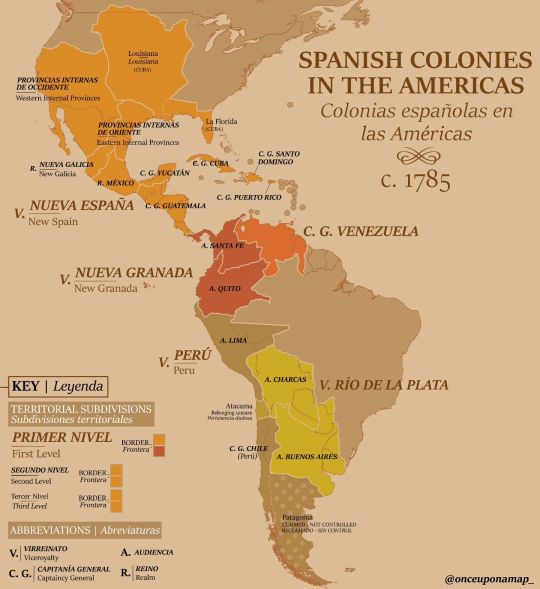
Spanish Empire, c. 1785.
by onceuponamap_
109 notes
·
View notes
Text
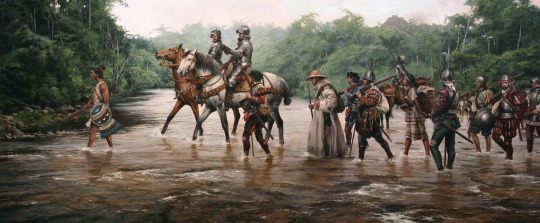
The March to Tenochtitlan by Augusto Ferrer-Dalmau
#hernán cortés#conquistador#art#augusto ferrer dalmau#conquistadors#tenochtitlan#tenochtitlán#mexico#spanish#spain#aztec#aztecs#mexica#mesoamerica#bartolomé de olmedo#pedro de alvarado#americas#history#european#age of discovery#age of exploration#explorer#spanish empire#conquest#aztec empire#expedition#river#friar#knight#priest
82 notes
·
View notes
Text
History memes #49
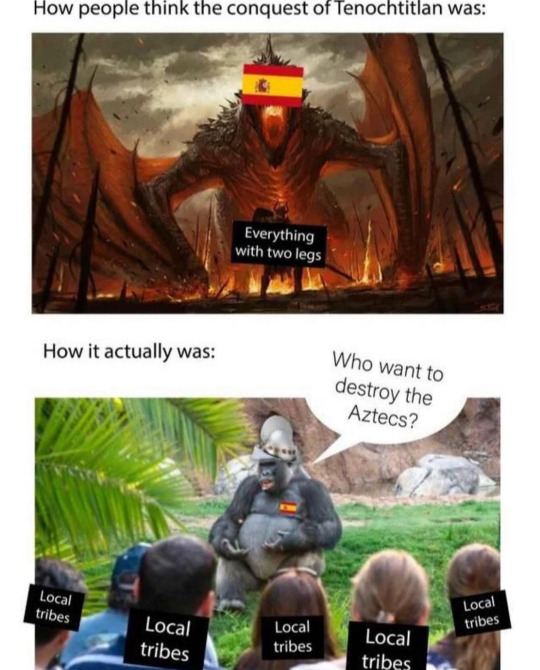
So, fun fact, most of the army that conquered the Aztecs were actually made up of other peoples in Mexico who decided they hated the Aztecs more than the newly arrived Spanish
#funny humor#history memes#funny memes#history#funny#humor#meme humor#dark humor#aztec#aztec empire#spanish empire#spanish#spain#mexico#mexican history#conquistador#Spanish conquest of Mexico#1500s#renaissance#renaissance history
32 notes
·
View notes
Photo
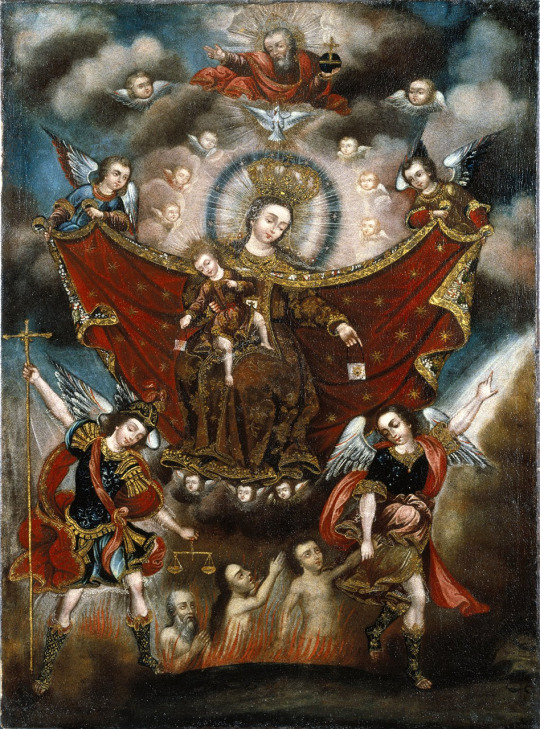
Nuestra Señora del Carmen
circle of Diego Quispe Tito (Peruvian, 1611 – 1681)
oil on canvas (73,7 × 104,1 cm), late-17th century
Brooklyn Museum
#723062583290216448/YF3iTzOg#Diego Quispe Tito#Catholic Church#Our Lady of Mount Carmel#Blessed Virgin Mary#Child Jesus#Monarquía Hispánica#Spanish Empire#Viceroyalty of Peru#17th century#Baroque#Brooklyn Museum#Cuzco School#Peru#sacred art#oil on canvas#paintings
112 notes
·
View notes
Text




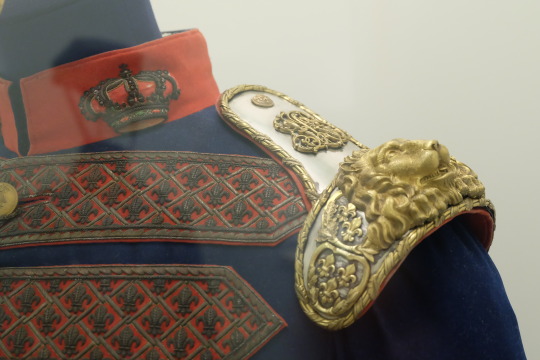
Uniform of Adjutant General from the Spanish Empire dated to 1855 on display at the Museum of the Army in Toeldo, Spain
The staff (Cuarto Militar) reporting directly to the Monarch was created on 15th of September 1855 and Francisco de Asís de Borbón, King Consort to Queen Isabella II and Duke of Cadiz, intervened directly in the design of the uniform for his adjutants.
This uniform belonged to Field Marshal Joaquin Bouligny y Fonseca.
Photographs taken by myself 2019
#uniform#fashion#art#military history#spanish empire#spain#spanish#19th century#museum of the army#toledo#barbucomedie
37 notes
·
View notes
Text

#meme#memes#shitpost#shitposting#humor#funny#lol#satire#funny memes#funny humor#comedy#funny meme#british empire#spanish empire#hispanidad#spanishness#fries#egg harbor#bumpass#corpus christi#sacramento#los angeles#history#history memes#irony#joke#parody
47 notes
·
View notes
Text

"Pizarro started from nothing, rising to a life of conquest and glory. He toppled the Inca with an act of Odyssean cunning. After years of war, he went out in a blaze of glory, fighting off assassins even in his old age… is this not Bronze Age Mindset?
Is this not greatness?".
-Alaric the Barbarian.
#Francisco de Pizarro#Pizarro#conquistadors#Spaniards#Spanish empire#Crown of Castile#Bronze Age Mindset#Alaric#Alaric the Barbarian#glory#indo-european#Europe#Tradition#Conquest#The Odyssey#Homer#castile#Exploration#Isabel of Castile#Catholic monarchs#Catholic Queen#cross of burgundy#myth#frontier#America
14 notes
·
View notes
Text

"The First Asians in the Americas is essential reading for anybody interested in the histories of global migration, race, and colonization in the Americas. Through painstaking archival research in Spain, Mexico, the United States, and the Philippines, Diego Javier Luis offers a bold reconceptualization of Asian migration to the Americas and restores heretofore little-known people and communities to their rightful places in history."
7 notes
·
View notes
Text

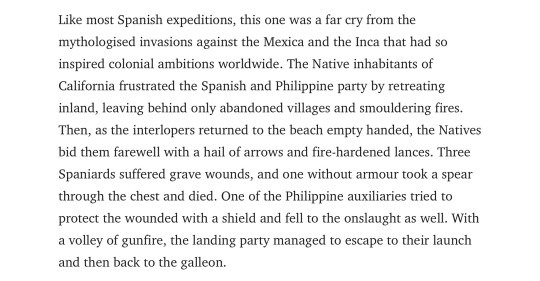
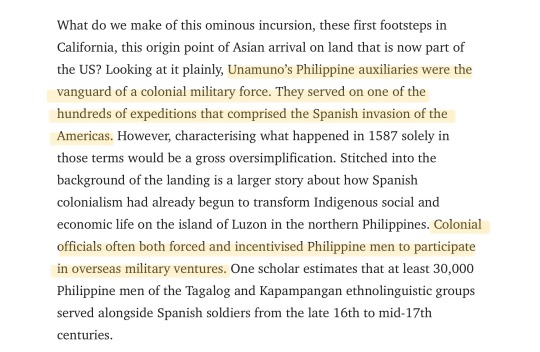
Asians in early America (2023) by Diego Javier Luis on Aeon
Indios (i.e. Philippine natives) in what is now California were brought on the Spanish galleons to fight alongside Spanish colonial forces against the Natives. These indios were some of the earliest Asians to arrive in the North American continent.
26 notes
·
View notes
Photo

Diachronic map of the Spanish Empire
The areas of the world that at one time were territories of the Spanish Monarchy or Empire
#Spain#history#Spanish Empire#Hispanic Monarchy#Catholic Monarchy#geography#colonialism#maps#cartography
24 notes
·
View notes
Text
A general survey here of Black Conquistadors:
This article provides a look at the variety of experiences that Black Conquistadors had and yes, there were multiple Black Conquistadors, not just the one famous dude Esteban who got murdered by the Pueblo peoples along with the others in that expedition. It also deals with a simple reality of who and what Conquistadors were. They were de facto agents of state power but not de jure. In reality they were ambitious warlords who aspired to great wealth but sometimes fell significantly short of it.
Equally at this time it is to a great degree anachronistic to read racial motivations into these people of the 1500s, because while the idea was in its formative stages it had not yet reached the fuller forms of the 1600s. They were not equals, by any means, nor seen as such but they were in a category that points to how distinct the reality of the Spanish Empire is to its myth. The Conquistador was as likely to be a man we'd consider Black today who adopted the Spanish language, Spanish armor, the Requirimento, and went forth on a white horse with a bow and a crown going forth to conquer and achieving the same mixed results as the people we'd now consider white did. Racism distorts the past in a great many ways, not least by downplaying that its origins were a slower, more brutal, process and that there were always people who defy its ideas and were content to do so.
#lightdancer comments on history#black history month#military history#history of imperialism#spanish empire#this is what 'race is a social construct' means#the idea took shape as a result of Las Casas' concept of 'helping' indigenous America at the expense of Black Africa#it took time for it to form and even in its formative years people were already defying it#equally these conquistadors would not have thought kindly of the people brought over on the ships and that would have been mutual
3 notes
·
View notes
Photo

The Spanish Empire in 1600.
« Atlante storico », Geo-Mondadori, 2000
via cartesdhistoire
The Spanish West Indian Empire was centered in the north on the Viceroyalty of New Spain and in the south on the Viceroyalty of Peru. It was enriched with the Philippine Islands from 1565, after the Spaniards discovered routes enabling them to cross the Pacific Ocean. In 1571, the city of Manila was founded there.
From 1546, the Spanish exploited the mines of Potosi (Upper Peru), from which most of the world's silver was quickly extracted. From 1564, a convoy system of galleons loaded with silver crossed the Atlantic Ocean to reach Spain. In the Pacific, once a year, the Manila Galleon transported silver from the New Spanish port of Acapulco to Manila in the Philippines. It made the return trip from the Philippines to Acapulco, carrying silk, porcelain, and Chinese lacquerware. From the 1590s, the value of this silver crossing the Pacific Ocean equaled all Atlantic trade combined.
74 notes
·
View notes
Text
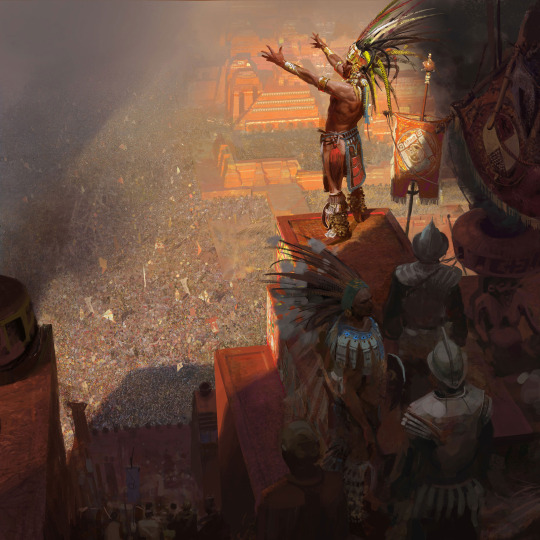

#conquistadors#craig mullins#aztec empire#spanish empire#conquistador#aztec#aztecs#moctezuma#hernán cortés#spain#spanish#mexico#templo mayor#temple#pyramid#mexica#huitzilopochtli#tenochtitlán#age of discovery#age of exploration#european#pedro de alvarado#mesoamerica#age of empires#cuitláhuac#bernal díaz del castillo#new world#americas#gonzalo de sandoval#cristóbal de olid
84 notes
·
View notes
Text
History Memes #18
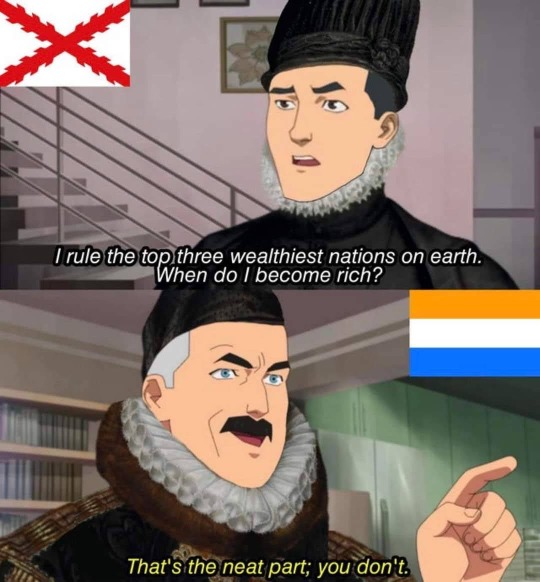
#funny humor#funny memes#history memes#funny#history#humor#meme humor#spain#spanish empire#dutch#netherlands#renaissance#1600s#1500s
16 notes
·
View notes
Photo
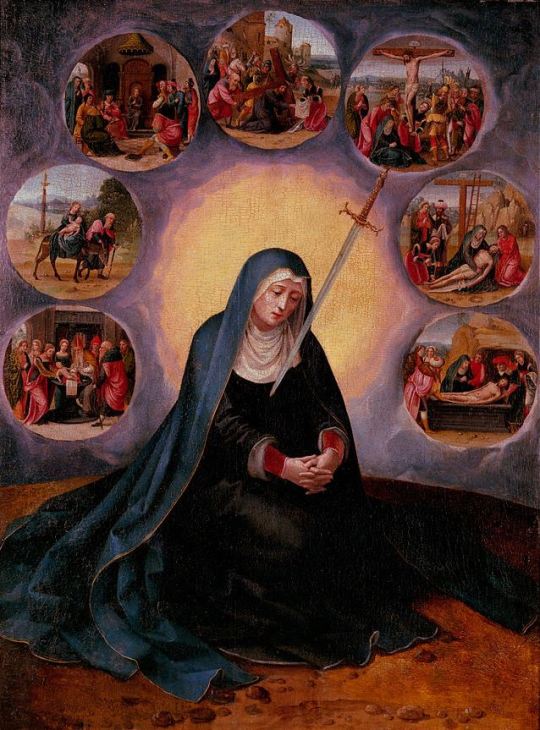
Mater Dolorosa
by the Master of the Female Half-Lengths (Brabantian, fl. c. 1530 – 1540)
oil on panel (66,7 × 75 cm), n. d.
Museu Nacional d'Art de Catalunya
#728536459968217088/pSyXot9o#Master of the Female Half Lengths#Catholic Church#Blessed Virgin Mary#Our Lady of Sorrows#Spanish Empire#Spanish Netherlands#16th century#Renaissance#Museu Nacional d'Art de Catalunya#oil on panel#sacred art#paintings
77 notes
·
View notes
Text

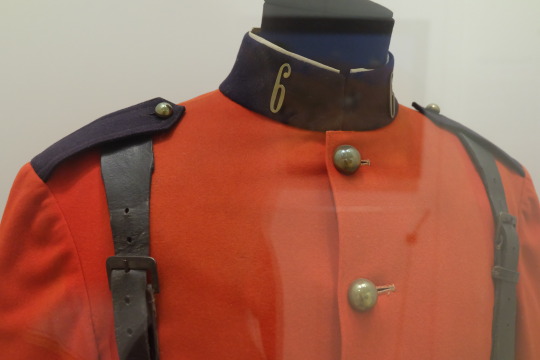

Uniform of a Moroccan Askari del Tabor from the Spanish Empire dated to 1908 on display at the Museum of the Army in Toledo, Spain
The early units of Native Police were created in 1908 and fought in the 1911 campaign alongside the Harka irregular units. From 1912 onwards they were organised into mias or companies under the name of the kabila that they served. The senior ranks and officers belonged to any Corps of the Spanish Army whereas the recruits were drawn from members of the kabila.
The mission of the Native Police was to guarantee law and order in the kabilas and to smooth the way for political "action and territorial organisation" Consequently, they increased in number at the same rate as the growth of Spanish occupation of North Africa. With the increase in the number of armed incidents, the units began to be deployed in military operations thereby shedding its role as a guarantor of law and order.
Photographs taken by myself 2019
#uniform#fashion#spanish empire#morocco#moroccan#20th century#military history#bourbon-anjou#museum of the army#toledo#barbucomedie
7 notes
·
View notes